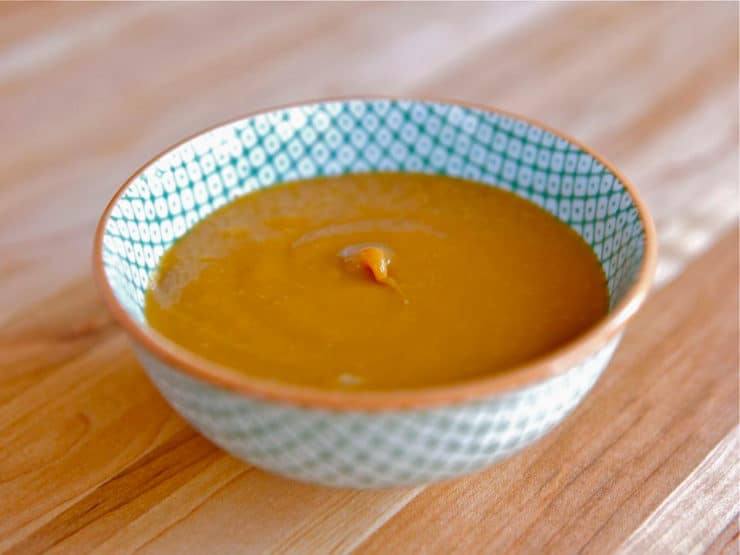
Dulce de leche. The words sound so rich, so dreamy. Just reading them makes my mouth water. This delicious, creamy sauce is made by slowly heating and caramelizing sweetened milk and sugar. Traditionally the process is very slow and includes a lot of stirring, requiring you to stand at the saucepan while the mixture caramelizes. Some people make it by boiling a can of sweetened condensed milk in a pot of water. I’ve always hesitated to do this, however, knowing the potential dangers of an exploding can. Recently my friend Jen shared an easier method with me for creating dulce de leche using sweetened condensed milk. Her process couldn’t be simpler, and it produces a wonderfully thick and creamy sauce. I just had to share it with you!
Use dulce de leche as a topping for ice cream, on pancakes or crepes, to flavor cakes and pies, or as an alternative to bottled caramel sauce. It’s the key ingredient in one of my upcoming Purim recipes (posting soon!). Or, just eat it with a spoon. It’s that good.
Recommended Products:
We are a participant in the Amazon Services LLC Associates Program, an affiliate advertising program designed to provide a means for us to earn fees by linking to Amazon.com and affiliated sites. As an Amazon Associate I earn from qualifying purchases.
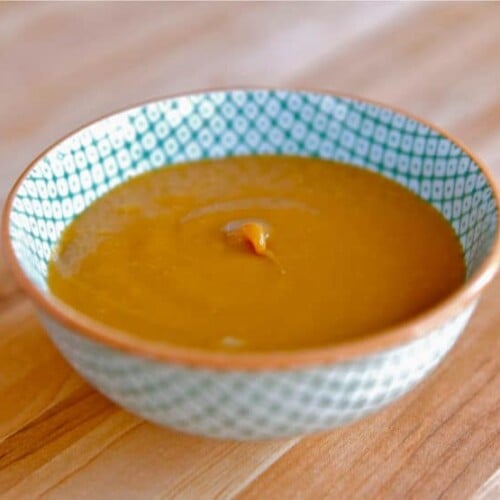
Dulce de Leche
Ingredients
- 14 ounces sweetened condensed milk (not evaporated milk) (1 can)
- 1/8 teaspoon salt (or more to taste)
NOTES
Instructions
- Preheat oven to 425 degrees F. Pour can of sweetened condensed milk into a ceramic pie plate or dish. Sprinkle the milk lightly with about 1/8 tsp of salt (for a more salted caramel flavor, use 1/4 tsp salt).

- Cover tightly with foil. Place the filled pie plate into a large roasting pan and fill the roasting pan with water till it reaches about halfway up the sides of the pie plate.Place the roasting pan into the oven. Let the mixture cook slowly for 75-90 minutes, check the water level every half hour to make sure it hasn't dried out too much. Add water as needed.

- At 75 minutes, begin checking the color of the dulce de leche. When it reaches a rich light brown caramel color, you'll know it's ready. The longer you let it cook, the thicker and darker it will become.Take the pie plate and roasting pan out of the oven. Carefully remove the pie plate from the hot roasting pan. Take off the foil.

- Whisk the dulce de leche mixture. Use warm, or allow to cool to room temperature depending on your intended use.

- Store in the refrigerator. The sauce will keep for up to 4 weeks when refrigerated.

Nutrition

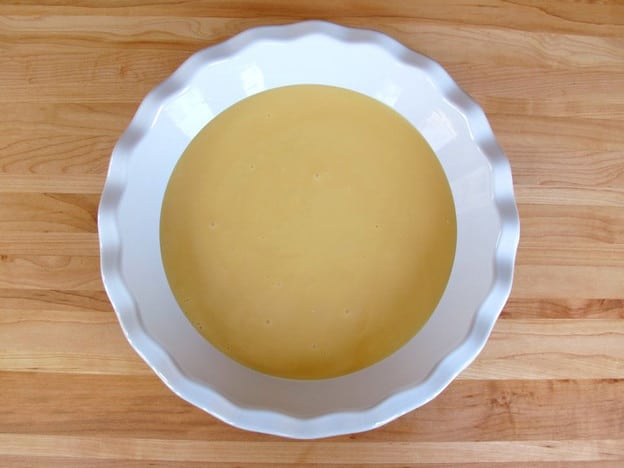
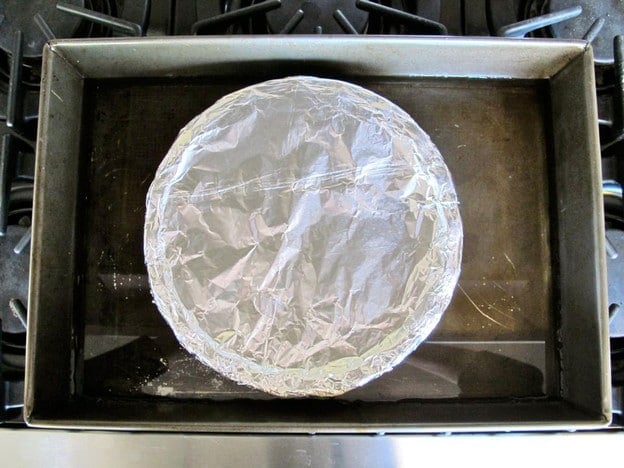
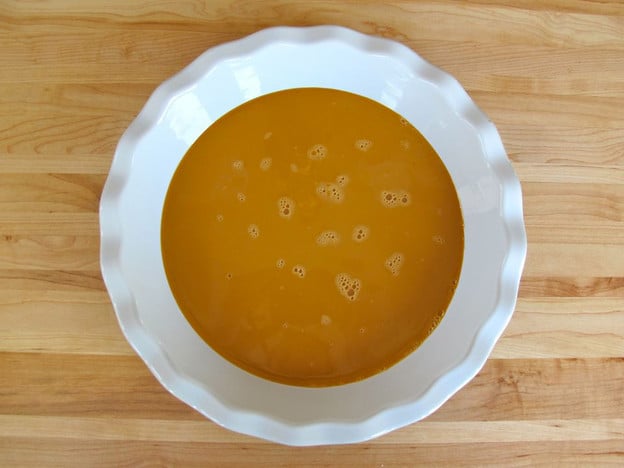
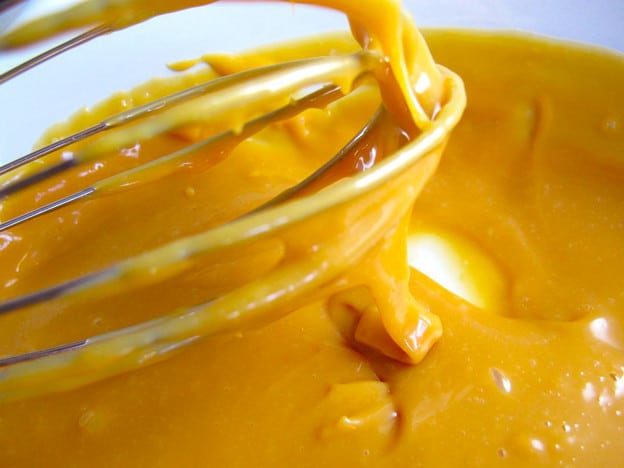
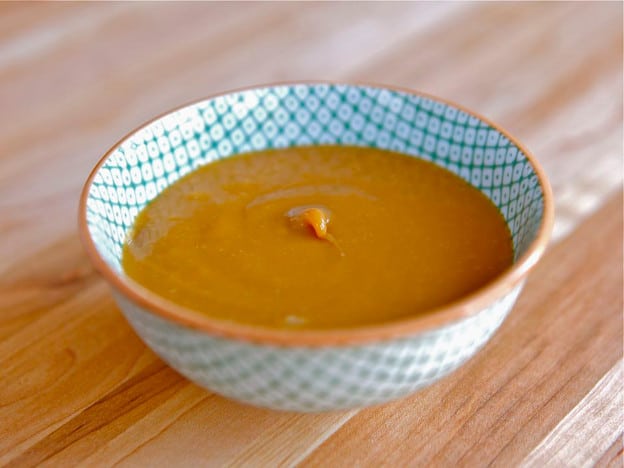


I have loved all things salted caramel since i tried it in Normandy France about 7 years ago. This is my first attempt at any type and its cooking in the oven right now!!!!
Thanks for the recipes, I’m going crazy saving them!!
Why add salt to the condensed milk? I made 4 cans in the crockpot added water to cover & cooked on low, after I let them cool, opened a can & never thought of adding salt, it’s delicious!
Hi Carmen– the salt enhances the overall flavor and gives dimension to the Dulce de Leche. If you’ve ever tried salted caramel, it’s the same basic concept. You can omit it if you prefer, but try it at least once… it’s so good! 🙂
Hi, I have this in the oven right now & realized I didn’t sprinkle the salt over the milk. Can I do it afterwards or should I just not worry about it? Thanks so much for the recipe. I don’t like the can on the stove and the crockpot is just to long for today’s recipe. I need it sooner than 7 hours from now.:)
Hi Debbie, the salt can be stirred in after cooking (though I do recommend sprinkling it as suggested in the recipe, it will dissolve better!). 🙂
it looked like dulce de leche, but it didn’t taste like it at all…
I wonder what went wrong for you. Dulce de leche is caramelized sweetened milk and sugar. Traditionally it is made by stirring sweetened condensed milk slowly for a long time over low heat, or boiling a can of sweetened condensed milk. This is simply a different, faster, safer heating method for making the exact same thing– chemistry-wise, it is no different than any other dulce de leche. Are you sure you used sweetened condensed milk, and not simply condensed milk? Perhaps you didn’t cook it long enough, or you cooked it too long? Other readers have had great success with this method. I’m sorry your experience wasn’t the same.
Can I use glass dishes in the oven? I don’t have a ceramic pie plate and can’t find my roasting pan… Who knows where it went??? Lol Just wondering if there’s a reason I should use ceramic or metal pans. Thanks!!
Yes, as long as it’s an oven-safe glass dish (like Pyrex for baking). Enjoy!
Just finished the dulce la leche. So good and so easy. I cannot wait to use this with the apples in the hamentashen. It is nice to have some new filling ideas
I love your blog! Thank you!
FWIW, my 1st encounter with making Dulce de Leche was when I tutored a visiting Venezuelan university student in English 40 years ago. We became good friends and she began to show me her favorite dishes from her home. The first was Dulce de Leche which then could not be bought in the US. She did exactly what is supposed to be so risky and either simmered the can in a pot of water on the hob for about 2 hours or in the oven in an ovenproof pan of water [kept it about 1/2 way up the side of the can. She assured me that everyone made it these ways in Venezuela, so I think that it must be extremely rare or the can to explode.
You say ” I think that it must be extremely rare for the can to explode” As far as I am concerned if it only has happen one time to someone it it still one time too many just the sheer potential of an exploding can should steer anyone away of doing it in this manner. For myself I am happy to have found this site which gives you a very easy safe way of making Dulce de Leche.
My safe method is to open 2 cans of condensed milk & pour into a canning jar. I seal it tight, cover with water & cook on low in my crockpot.
Works beautifully!
Sounds great! Is it ok to use a glass Pyrex pan or any other alternative ? Thank you!
Hi S! Yes, a glass Pyrex will work fine as long as you’re not broiling. It’s not recommended to use glass in broiling situations because of the shattering risk. But for this application, it will work just fine. Enjoy!
It’s so nice to have a delicious alternative to the treacherous “boil in the can” method.
Here’s a challenge: Is it possible to make a pareve dulce de leche? Without the leche? Or would it involve too many artificial ingredients?
Thank you for the beautifully written recipes and food history.
I eagerly look forward to reading all your posts.
Jack, in Colombia is called Manjar blanco or Arequipe and like in your country is very traditional in mine too.
Can you clarify again the “cook slowly” part. You preheat the oven to 425, but then do you leave it at that temp? Or, do you turn it down or off once put in the oven? Thanks.
Let it cook in the oven at 425 degrees F. undisturbed for at least 70 minutes before you begin checking for color/texture.
in Chile, this is called manjar (man-char) “ch” is the “back of the throat” sound, also very kosher!!
Hi Tori!
We really like your blog!
We already made a few of your recipes and they were ALL `delish`!
Do you know how to make a parve/dairy free version of de dulce de leche? Could a condensed form of soy milk or Almond milk be used? If so, how can we make a parve condensed ~milk~? Thank you, Purim sameach!
Hi Sarah Malka, I’m just wondering if you tried making a condensed soy or almond milk for this recipe. And if so, how did it turn out? Thank-you!
Tori, Dulce de leche is so traditional for us. For example, we make litle sweet empanadas filled with guava paste, dulce de leche and mozzarella. They taste so good. We use dulce de leche a lot, so I’m glad to see this great easy and safe way to do it 🙂
I know someone who was badly injured by an exploding can while making it that way. She had done it many times before with no mishaps.
I’m looking forward to trying your method!
Thanks for posting your comment. Sorry to hear that any one was hurt. I posted the comment from Eagle Brand on the other web site and a blogger got mad because I shared my views and she, “The Nurse”, was sure it was OK to boil the can because she never had a problem. I told her she was not the only nurse on that site! Never throw caution to the wind when common sense should rule the day.
I love this stuff on pretty much anything! I haven’t made my own yet, but know I’ll love it!
I found a boil the can recipe on another web site. Thinking it was dangerous or leaching toxins from the can, I emailed Eagle Brand and asked their opinion about boiling their can. They gave no details but didn’t recommend doing that and pointed to a recipe, using a different technique, on their web site instead. Accidents happen and they aren’t selective.
I always cook caramel in the pressure cooker. Place 4 cans of condensed milk on top of a doubled folded dishtowel inside the pressure cooker. Don’t let them touch the sides or each other. Fill with water to an inch over the tins. Bring up to full pressure, and cook for 40 mins. Let cool before opening, as hot caramel could burn you as it shoots out the can if you open while hot.
You can also just place the unopened can completely covered in a pot of water and let it boil for a couple of hours. More or less depending on how you like the texture. 🙂
hahaha. perhaps next time I’ll read the entire post before commenting….seriously, I boil the can ALL the time and nothing horrid has happened. Someone even told me it can be done in a pressure cooker in under a half-hour!
Hi Carol Ann! Yes, that is one method, but I avoid it because if forgotten on the stove, the water could boil away and the can has the potential to explode. It won’t happen if you’re careful, but this oven method carries less risk. However, the stovetop method works just as well, as long as you’re careful! 🙂
My very good friend who was weaned on dulce de leche in Argentina had the unfortunate experience of forgetting that she had a can of condensed milk on the stove and leaving the house. She returned to find the contents of the can coating the ceiling.